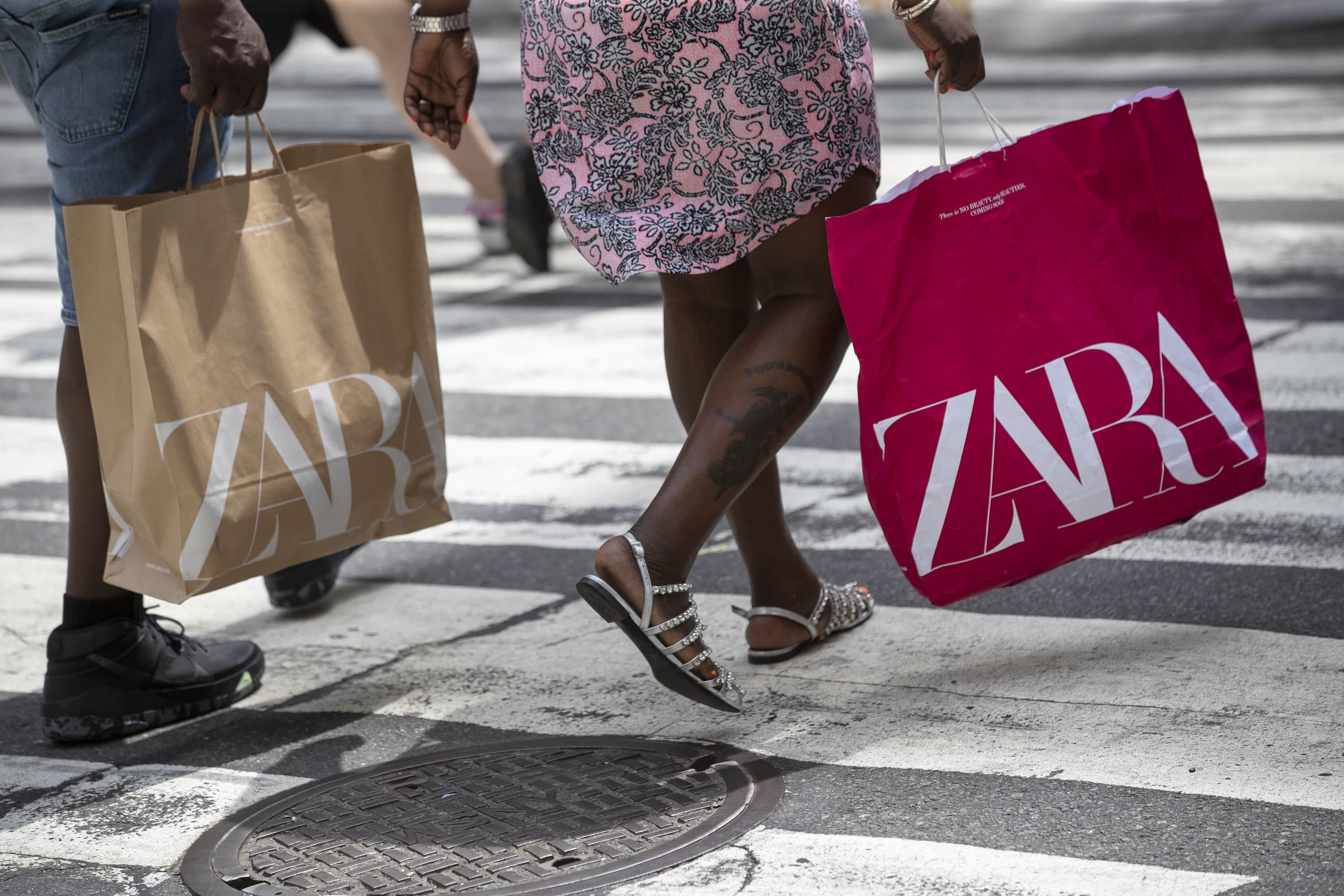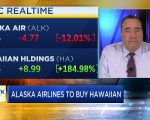
Shoppers carry Zara bags on Fifth Avenue in New York, on Saturday, May 22, 2021.
Victor J. Blue | Bloomberg | Getty Images
Zara owner Inditex on Wednesday beat expectations with a 40% jump in half-year net profit despite the world’s biggest fast fashion company slowing the pace of its price increases.
Inditex has widened its lead over Swedish rival H&M this year by delivering fashion trends faster from nearby suppliers at prices that allow it to cope with inflationary pressures.
The company posted a net profit of 2.5 billion euros ($2.7 billion) for the six months to July 31, outpacing a 2.38 billion euro market forecast according to data from LSEG.
However, its shares fell 1.5% in early trading in Madrid as investors booked profits following a 58% rise over the past year.
“Given recent performance, many investors just question how long the strength can go on for,” said Bernstein analyst William Woods.
Most analysts expect Inditex’s strong financial position will allow it to keep prices stable or even cut them in the face of weakening demand and lower inflation.
The retailer’s flagship brand Zara plans further store expansion in the United States, a market that two years ago became Inditex’s biggest after Spain.
Inditex sales rose 13.5% to 16.9 billion euros and a gross margin of 58.2%.
The group, which also owns Bershka, Pull & Bear and other brands, said sales at constant currencies between Aug. 1 and Sept. 11 were 14% higher than a year earlier, showing that the pace of summer sales continues as autumn collections start to arrive.
“I expect pricing increases to moderate now through the course of the next year,” said RBC analyst Richard Chamberlain, adding that the results beat his expectations.
With a big share of its costs in euros, Inditex said it expects currencies to have a -3.5% impact on sales this year, worse than the -2.5% impact it expected previously.
Growth opportunities
The company kept its outlook unchanged, saying it “continues to see strong growth opportunities” as it currently has low market share in the 213 countries where it has a presence.
Inditex was among the first fashion retailers to raise prices in response to surging inflation early last year. Its higher and more diverse pricing strategy outside its home market of Spain helped it post record margins.
With inflation easing, analysts at Bank of America and the Royal Bank of Canada are betting that Inditex is better placed than its peers to compete by offering stable prices and even lowering them next year to continue growing globally.
Worldwide Inditex reduced its stores to 5,745 from 5,801 in the second quarter, showing how the retailer has managed to increase sales while reducing space.
Zara has sought to attract more aspirational shoppers by associating its brand with luxury, as opposed to fast fashion. Last week it launched a collection with celebrated fashion photographer Steven Meisel, with a campaign featuring supermodels including Linda Evangelista.
Since July, Inditex has been renewing anti-shoplifting devices at its stores, replacing tags with chips sewn into garments in the autumn and winter collections, the company told Reuters.
The switch to a soft-alarm system aims to reduce checkout times by up to 50%, though only a small number of items have them for now.







